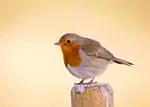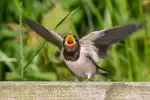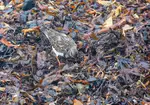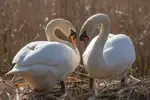- Home
- Photography
- Wildlife Photography in the Rain
Wildlife Photography in the Rain
The rain in Northumberland that day wasn't gentle. It was a cold, relentless October soaking that found every gap in my supposedly waterproof gear.
I was six miles into a hike, halfway to nowhere, and completely drenched. My socks squelched in my boots with every step. My camera, tucked under my jacket, felt like a lead weight.
Many photographers would have stayed in the car. Most people would have stayed home.
And that’s exactly why you should go out.
Because in those moments - when you’re cold, uncomfortable, and as much a part of the storm as the animals hiding in it - the real stories happen. This is where you stop just taking pictures of nature and start making pictures with it.
I learned more about photography in that one miserable, wonderful hike than in a hundred sunny afternoons.
The Lie of the Perfect Day
We’re taught to wait for the "golden hour," for soft, warm light. But a sky full of clouds is a gift. It’s a giant softbox that diffuses light evenly, making colours rich and deep without harsh shadows.
Out there, shivering, I watched a fox move through the drenched grass. The greens and browns weren't washed out; they were profound.
This is your first "win" in the rain. You don’t need to worry so much about harsh light. The world is already perfectly lit for you.
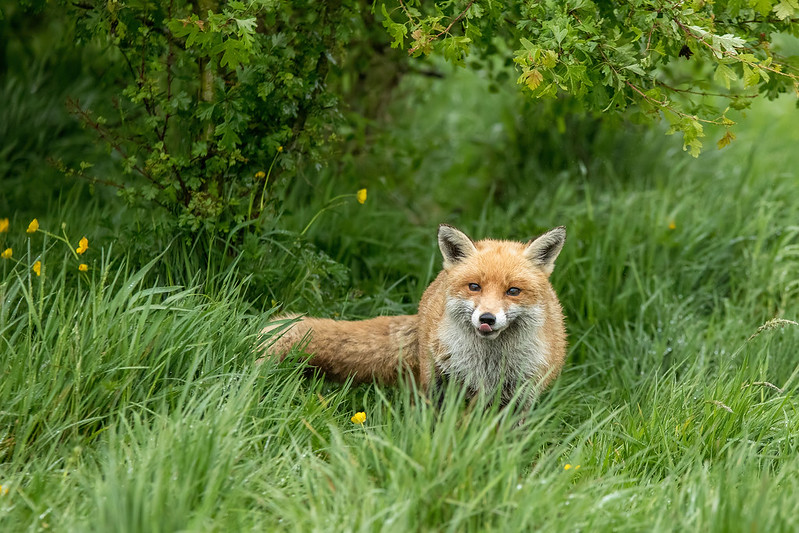 Canon EOS 7D Mark II, 70-200mm, f4 1/1250th at 1600 ISO.
Canon EOS 7D Mark II, 70-200mm, f4 1/1250th at 1600 ISO.Your First Job Is To Stay Functional, Not Just Dry
Before that hike, I'd worried endlessly about my gear. Is it weather-sealed? What if water gets in?
But as water seeped into my jacket, I had a revelation. The most important piece of gear to protect wasn't the camera. It was me.
I was so cold I could barely feel my fingers on the shutter button. No photo is worth risking your well-being. Before you even think about camera covers, make sure you have the right gear to keep yourself safe and thinking clearly.
- A truly waterproof shell jacket and trousers (not just "showerproof").
- Waterproof boots with good grip on wet ground.
- Warm, non-cotton layers (like merino wool) that insulate even when damp.
- A warm hat and waterproof gloves to keep your extremities functional.
Your ability to think and function is what gets the shot.
Embracing the Chaos
The real test began as the gloom deepened and the rain intensified. It wasn't one single problem, but a cascade of them, each one a new invitation to just give up and go home.
The First Annoyance
An hour into the downpour, my camera strap was no longer just wet; it was a cold, abrasive rope chafing my neck with every step.
It was a small thing, a minor discomfort, but it was constant and irritating.
In that silly, frustrating moment, I learned a valuable lesson: it's the small comforts that keep you out in the field longer. A spare, dry strap in my bag would have felt like the height of luxury.
A Race Against the Dark
The darkness was closing in fast. This is the moment most people pack up.
My brain was racing. "How do I get enough light and still show what this rain feels like?"
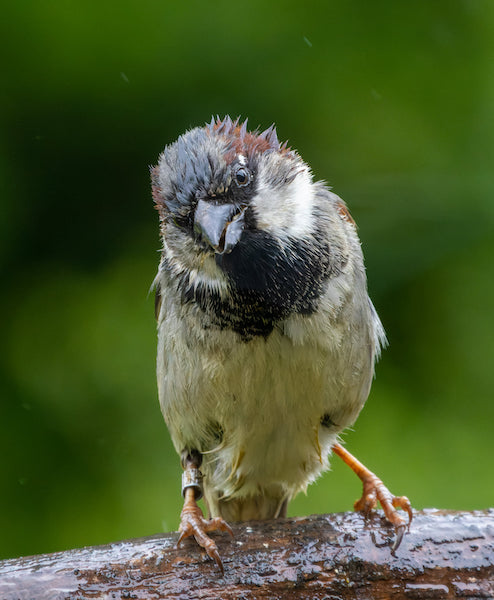 A bedraggled sparrow
A bedraggled sparrowAperture (Letting Light In):
First instinct? Open that aperture wide. I set my camera to Aperture Priority (Av) and spun the dial to f/4, letting my lens drink in every possible photon.
ISO (Making the Camera More Sensitive):
The gloom was winning, so I cranked my ISO up to 1600. Yes, purists obsess about grain, but a slightly grainy photo that captures a magical moment beats a clean photo of nothing. Every single time.
Shutter Speed (Capturing the Rain):
Then came the creative decision. Did I want to freeze those raindrops mid-flight at 1/500s? Or let them streak into silver ribbons at 1/30s? The storm was telling two different stories, and I had to choose which one to capture.
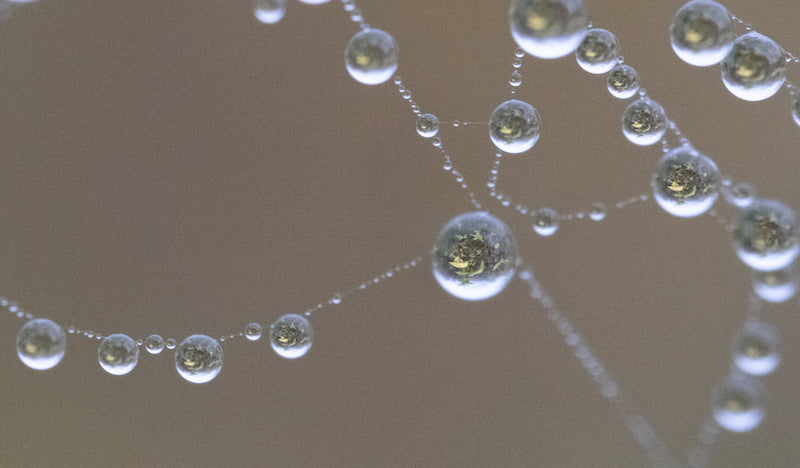 Reflections in rain drops on a cobweb - keep your eyes open for little scenes like this
Reflections in rain drops on a cobweb - keep your eyes open for little scenes like thisThe Moment of Cascading Failure
Just as I was tracking a bird, a sudden gust of wind blew a sheet of rain sideways, straight into my lens hood. It flooded instantly.
Oblivious, I carried on shooting. When I finally chanced a look at my screen, I saw every shot was a mess—a ghostly, smeared haze.
My lens hood, which I thought was protecting me, had become a tiny bucket.
I frantically wiped the lens with my sleeve, making it worse. As I fumbled with my hazy viewfinder, I realized my camera was fighting its own battle. The autofocus began its confused, useless dance, hunting back and forth through the deluge.
In that moment of cascading failure, I could either give up or take control. I did what I should have done ten minutes earlier: I flicked the switch to manual.
Turning that focus ring myself felt strange after years of letting the camera decide, but it was also liberating.
In that chaos of rain and movement, I was no longer a passive operator but an active partner with the storm.
Nailing the focus on the fox's eye myself wasn't just a technical victory; it was proof that embracing the struggle is precisely how you create the shot. This is how you find your confidence when technology, and the weather, push you to your limits.
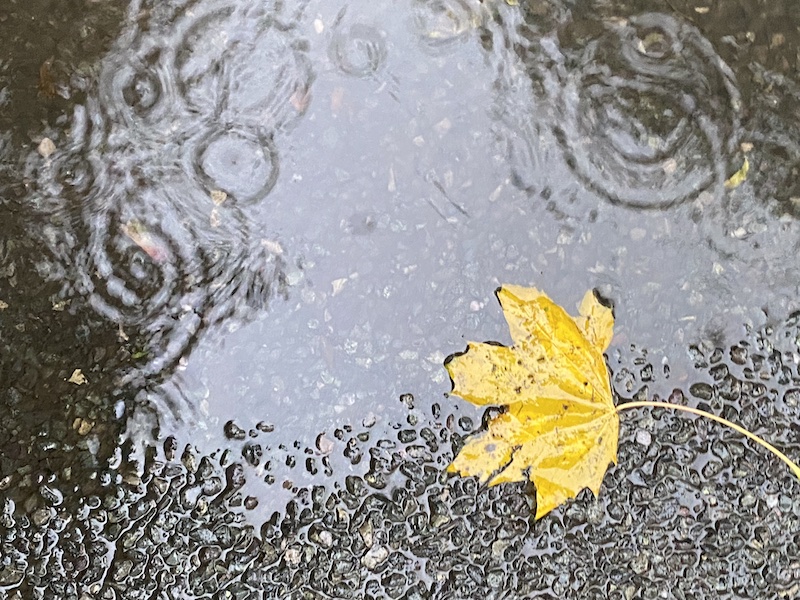
The Reward? A world to yourself
The best part of that whole, soaking experience? The silence.
There was no one else for miles. The wildlife hides were empty. The usual chatter of other photographers was gone, replaced by the sound of wind and rain.
Animals behave differently when we're not around. They are more at ease, more themselves. And because I was the only person crazy enough to be out there, I got to witness it.
This is the ultimate reward for braving the weather. You get the whole wild world to yourself.
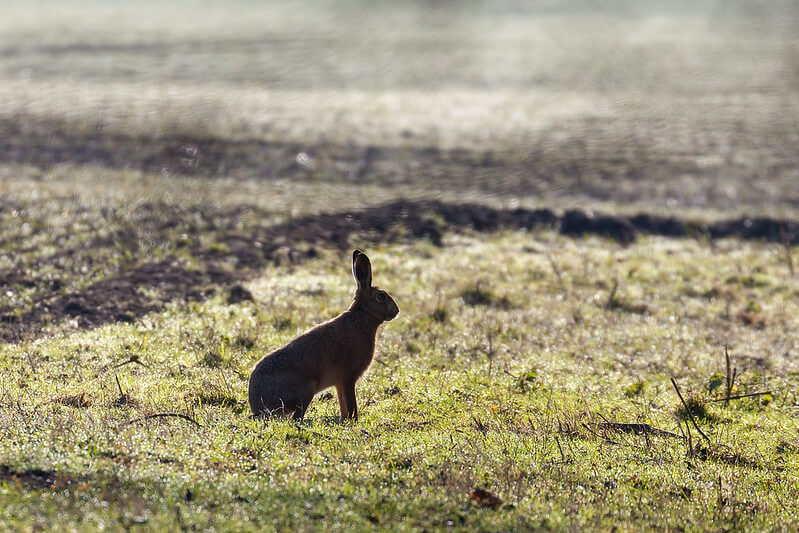
The Magic of Puddles when the storm breaks
As the rain finally eased, a new world appeared. Every puddle became a perfect, temporary mirror, reflecting the dramatic, clearing sky.
I watched a blackbird bathing in one, its joy palpable. I got down low, almost lying on the wet ground, to capture the action from its perspective.
This is the final chapter of a rainy day shoot. The light after a storm is often the most beautiful. Look for these reflections. They turn a simple scene into a work of art.
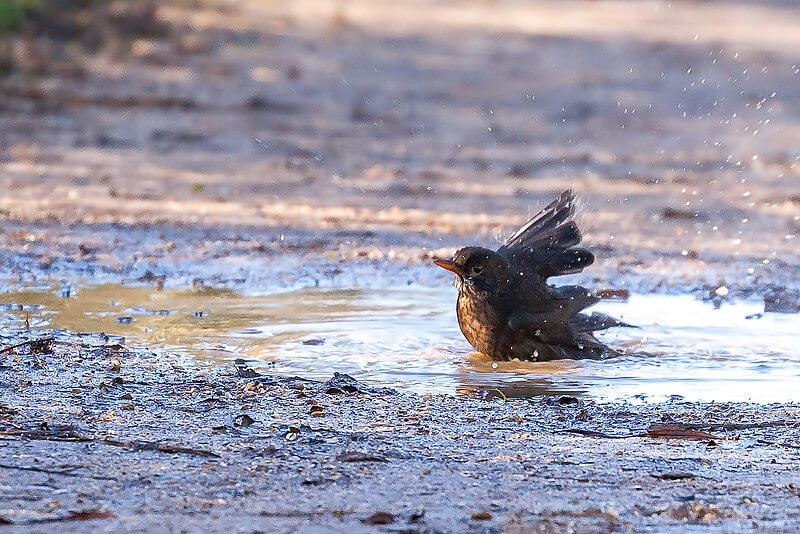 A female Blackbird bathing in a puddle after the rain
A female Blackbird bathing in a puddle after the rainYour Turn
So, the next time clouds gather and the forecast looks grim, I hope you don't see a cancelled day.
I hope you see an invitation.
Zip up your jacket, protect yourself first and your gear second, and step out the door. Go find a story that only the rain can tell. Sometimes, the most remarkable moments in photography aren't just found in the wild - they're found in the storm.
Storm Shooter’s Field Checklist

About the Author
For me, it’s never been just about bird names or camera settings, but the thrill of seeing a distant speck turn into a hunting kestrel.
After years of learning how to notice and photograph those moments, my camera has become the tool - and this site the field notebook - where I share what I’ve discovered.
If you’re ready to look a little closer, you’ll find the trips, lessons, and small wins that can help you see and photograph the wildlife right on your doorstep.
Step Behind the Wild Lens
If you’ve enjoyed your time here, you can also follow along by email.
I send the Wild Lens newsletter occasionally. It’s where I share:
- Fresh field notes and recent encounters
- The stories behind favourite photos
- Practical tips that don’t always make it onto the site
You’ll get new UK wildlife guides, photo tips, and ideas for your next walk, straight to your inbox.




